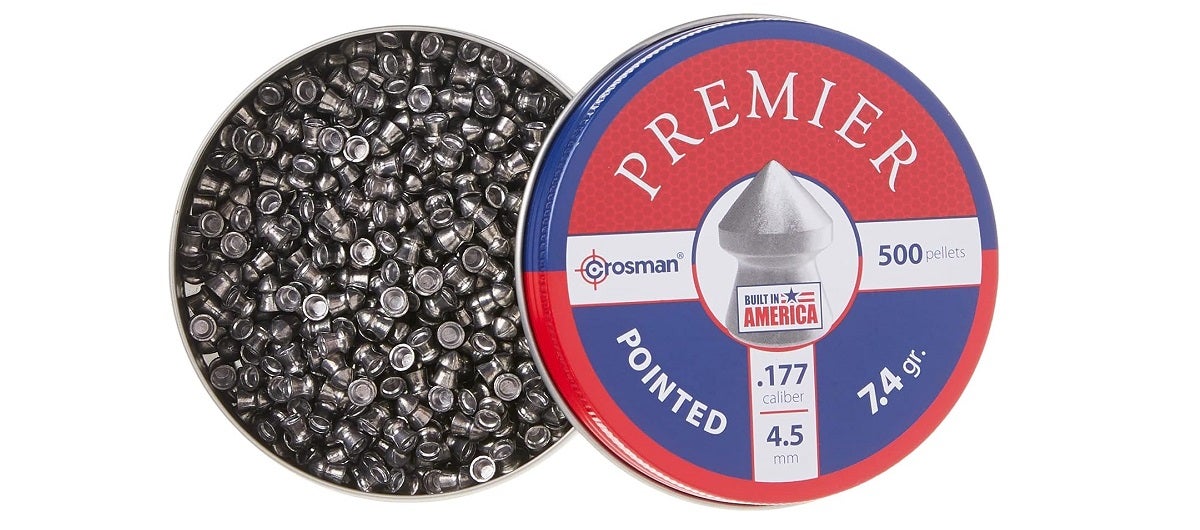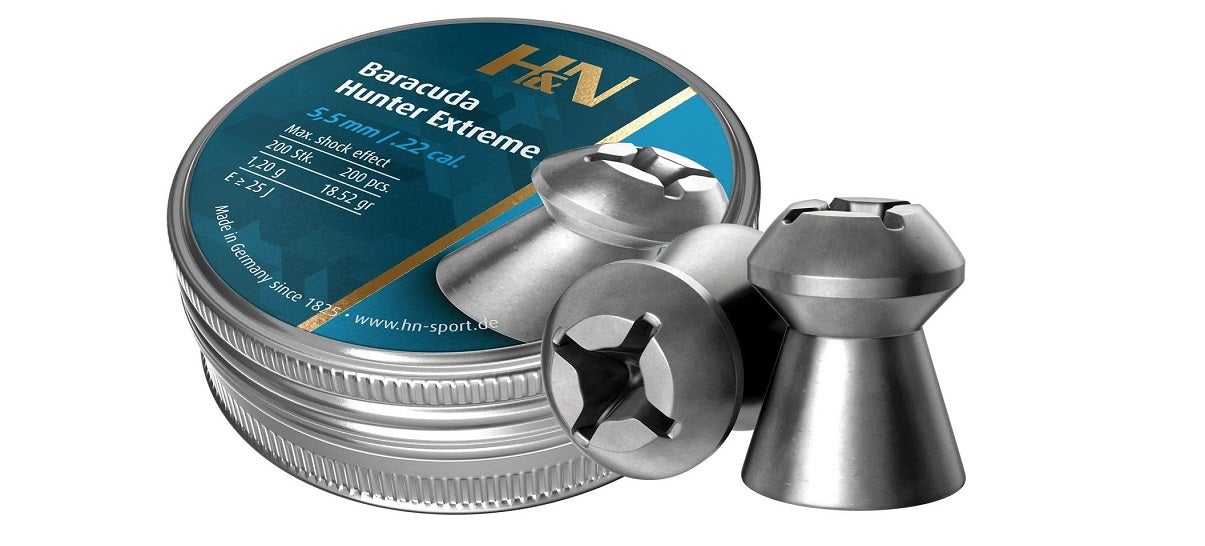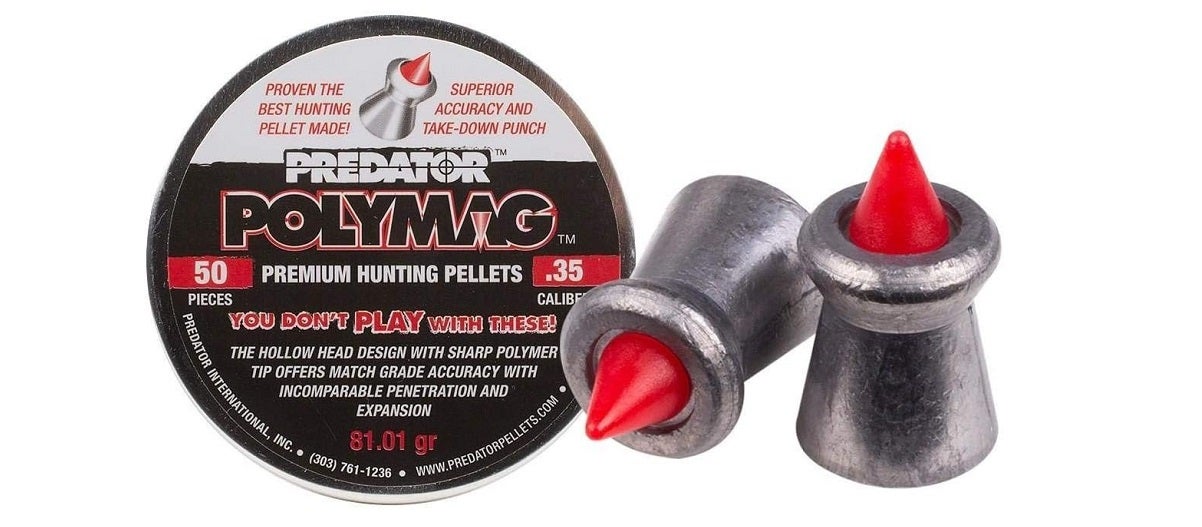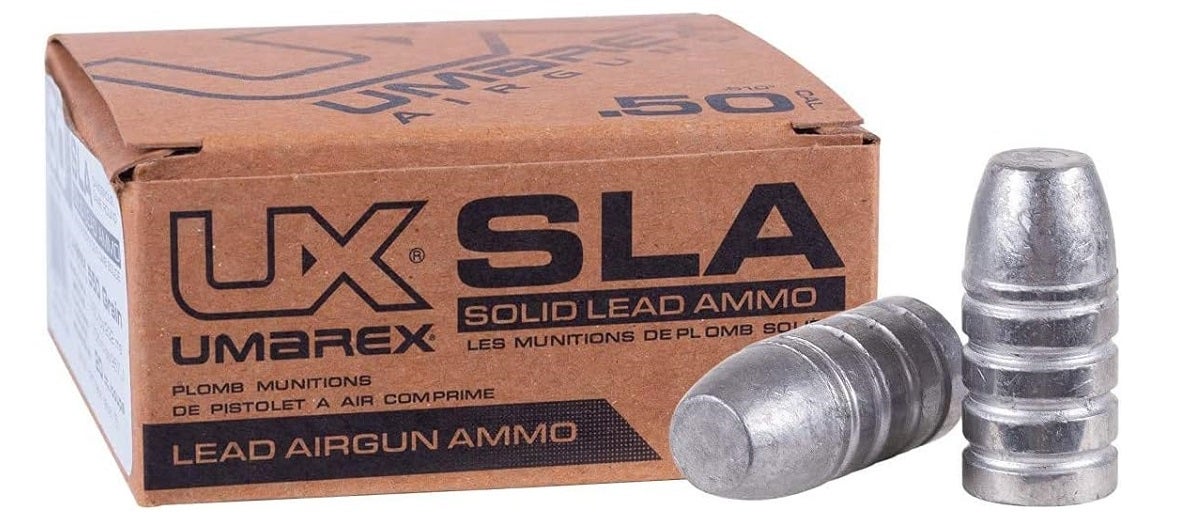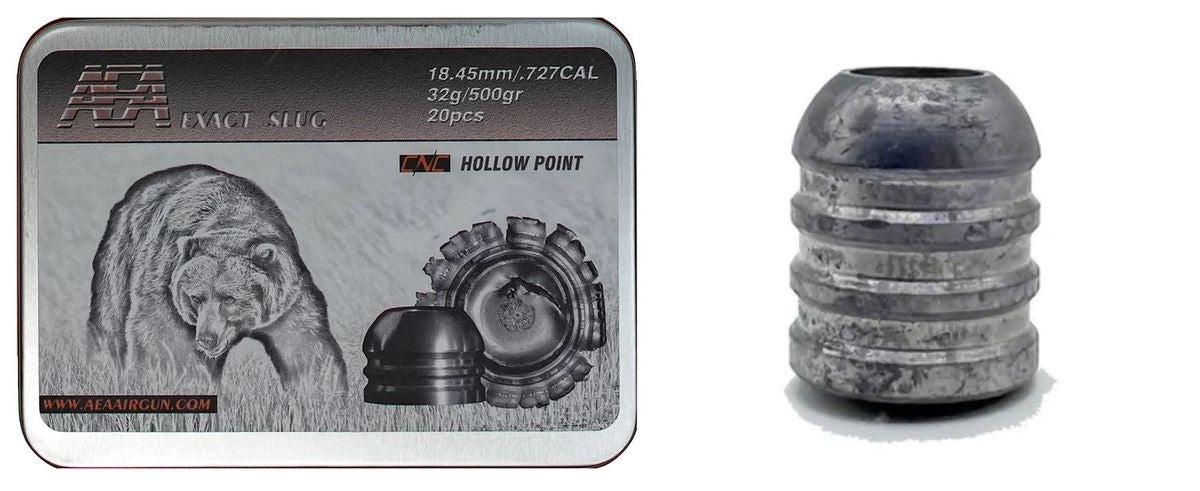Beginner’s Guide to Air Rifle Calibers – Size, Efficacy, and Use in the Field
Travis Olander 08.31.23
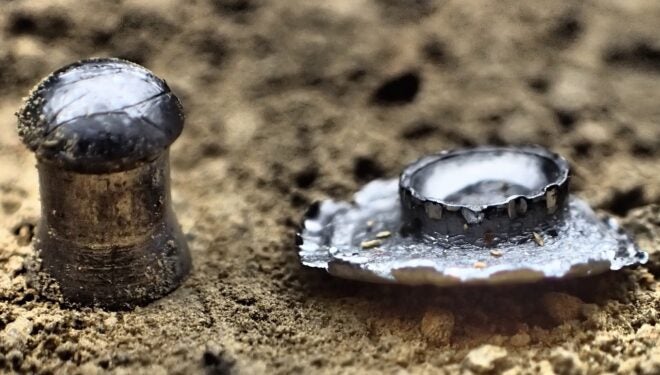
With the right power and pellets, an air rifle can provide some seriously impressive – and lethal – performance: Up to 1,500 ft. lbs. of muzzle energy. More than enough to take down American game, and certainly enough power to act as a personal defense weapon in a pinch. But air rifle ammo, like firearm cartridges, varies wildly in its form and function. There are varying grain weights, calibers, and pellet shapes to consider. Some are made for plinking and target shooting, while others are designed to inflict lethality when hunting. Let’s take a closer look at air rifle calibers and learn which pellets are best for your new airgun.
BBs vs. Pellets: They Aren’t The Same
Calling a BB an air rifle pellet is like calling a shot shell a rifle cartridge. The two are functionally and physically different, as are the air guns that fire them.”BBs” (ball bearings) are spherical steel balls that almost universally measure .18″ in diameter. They’re mostly relegated to acting as ammo for CO2-powered toy guns. Although they’re technically air guns, BB guns are inaccurate beyond a few yards, and they’re not considered lethal — though they will certainly puncture skin or leave a welt.
Air rifle pellets are made from lead and other alloys. They’re designed to be aerodynamic for longer range accuracy. Air rifle pellets are also designed to deform upon impact, reducing the chances of a dangerous ricochet.
Air Rifle Calibers
Air rifle pellets, like firearm cartridges, come in different calibers. The smaller the caliber, the lighter and faster the round. Large air rifle calibers can often be made to travel as fast as small calibers.
But you’ll need to invest in a pricier airgun, one that comes with a large air tank capable of holding 3,500 PSI or more. These are the most common air rifle calibers:
.177 Caliber
Pictured: Crosman Premier Pointed Lead Pellets
One of the most popular air rifle calibers happens to be the smallest: The .177 pellet is the lightest and often quickest caliber you can send down the muzzle, with velocities approaching 1,650 FPS in the fastest rifles.
At these velocities, the .177 is more than capable of killing varmint, and it’s favored for backyard plinking and target shooting. The .177 is ideal for those who desire the most capacity per air charge. PCP air guns with large tanks can often fire up to 200 to 300 rounds of .177 before requiring a re-fill.
If you’re introducing a youth shooter to the concept of firearms, a .177 air rifle is a great starter gun, too. Recoil is nonexistent, and even high-velocity .177 guns produce mild shot reports that doesn’t require hearing protection. Generally, .177 air rifles are accurate to 50 yards, with high-velocity guns capable of producing acceptable groupings at 75 yards.
.20 / .22 / .25 Caliber
Pictured: H&N Baracuda Hunter HP Pellets
Compared to the .177, the .20-series air rifle pellets pump up muzzle energy just a bit. These are best suited for small game. Higher velocities — 900 to 1,100 FPS — allow the .22 and .25 calibers to handle medium game, like wild boar and small deer, within 50 yards. Target-worthy accuracy is achievable at 50 to 75 yards.
Next to the .177 pellet, the .22 caliber is the most popular air rifle pellet. Because of its popularity, there’s a huge selection of affordable, accurate air guns chambered in .22. Like the .177, rifles that chamber these pellets are also lightweight, relatively quiet, and easy to handle, making them great starter rifles for first-time buyers and youth shooters.
.30 / .357 Caliber
Pictured: Predator Polymag Hunting Pellets
Air rifles chambered in .30-caliber pellets are quite lethal, with muzzle energies comparable to, or even greater than, .22 LR rimfire firearms. It’s at this point wherein you’ll start seeing “serious” air rifles: PCP guns with massive carbon fiber tanks, 30″ barrels, and price tags well over $1,000 to $2,000.
With the right air reservoir, a rifle pushing .357 pellets can achieve 200 to 250 FPE, or ft. lbs. of muzzle energy. That’s comparable to the typical .380 ACP pistol cartridge, and more than enough power for lethality against large animals and self-defense threats.
High-velocity airguns chambered in .357 are capable of obtaining good accuracy up to 100 yards.
.45 / .457 / .50 / .51 Caliber
Pictured: Umarex SLA Lead Slugs
Air rifles chambered in .45- to .50-caliber pellets are capable of producing some impressive muzzle energy: Up to 1,000 ft. lbs., which is comparable to (and, in some cases, more powerful than) most handgun cartridges and some rifle rounds.
But air rifles capable of slinging this much lead aren’t cheap. Here, you’ll find plenty of high-performance AirForce air guns with retail prices between $900 and $1,100. There are few piston-actuated airguns in these calibers; most are bottle-fed PCP rifles.
.58 / .72 Caliber
Pictured: AEA 500-gr. Hollow-Point Slugs
.58 and .72-chambered air rifles are reserved for large game and dedicated airgun enthusiasts who are willing to drop serious cash for the best performance available today. Pellets in these calibers can weigh as much as 850 grains and are capable of producing up to 1,500 ft. lbs. of muzzle energy — that’s more than some magnum handgun cartridges.
This is a niche segment of the air rifle market. These pellets are considered overkill for most use cases, and are best suited for pursuing large hogs and antlered game.
That doesn’t mean these massive pellets — and the rifles that fire them — don’t have a distinct advantage. Compared to conventional firearms offering similar power and lethality, these pellets provide much quieter shot reports, especially when suppressed.
And compared to the cost and requirements of obtaining an NFA-regulated firearm suppressor, these top-caliber airguns provide a great way to hunt and bag tags without spooking a herd in the vicinity. Many hog hunters rely on air guns chambered in these pellets for that reason alone.

